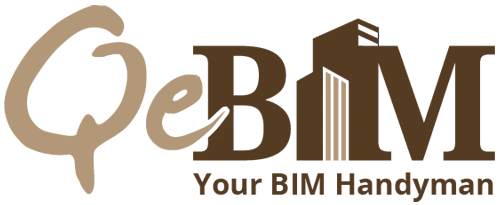
Building Information Modelling (BIM) has become a game-changer in the construction industry, allowing architects, engineers, and contractors to create digital models of buildings and infrastructure that can be used for various purposes. However, creating these models can be a complex and time-consuming process, especially if done manually. This is where Scan to BIM services come into play, as they enable stakeholders to create precise and detailed BIM models from 3D laser scans, and point clouds.
QeBIM is a renowned Scan-to-BIM Company that is committed to providing cutting-edge services that cater to the evolving needs of the construction industry for the last 2 decades. Our expert team has extensive experience working with laser scans and point clouds, allowing us to create highly detailed and accurate BIM models for all types of projects. We deliver a wide range of BIM Services across the UK, Spain, Ireland, Germany, France, Italy, Singapore, and other European countries. Moreover, we pride ourselves on our ability to deliver projects on time and within budget, while maintaining the highest levels of quality and customer satisfaction. When you choose QeBIM, you can be rest assured that your project is in good hands.
QeBIM's Scan to BIM Process:
At QeBIM, we take a streamlined approach to our Scan to BIM Conversion Services. Here's a brief overview of our process:
1) Consultation
We start with a consultation to understand the scope and requirements of the project, as well as any specific requests or templates from the client.
2) Scan Conversion
We receive scanned inputs from clients in various file formats, such as .XYZ, .PTS, .E57, and more, and convert them into Revit-compatible formats, enabling seamless integration with other BIM software tools.
3) Template Customization
Based on the client's requirements, we customize the template and set the necessary parameters for the BIM model.
4) Import Scans
We import the scanned files into Revit and align them with the necessary coordinates.
5) BIM Modelling
We then create detailed as-built BIM models, layer by layer, from the scanned data.
6) Quality Assurance
To ensure the highest quality, we check the 3D models for compliance with project standards, potential clashes, and accuracy.
7) Delivery
After completing the necessary checks, we deliver the final, clash-free 3D Revit model to the client.
Scan to BIM Conversion Services that QeBIM Provides:
Point Cloud to BIM Services
Converting point cloud data into detailed BIM models to streamline the construction process and enable efficient project management.
Revit Modelling Services
Translating laser scans, point clouds, and other data sources into 3D BIM models that meet the specific requirements of your project.
Clash Detection Services
Identifying and resolving potential clashes and errors in BIM models to optimize the design and construction process, reduce costs, and enhance safety.
As-built BIM Services
Creating accurate as-built BIM models that reflect the current condition of the building or infrastructure, providing valuable information for renovation, restoration, or maintenance projects.
Benefits of Scan to BIM Services
By outsourcing Scan to BIM Modelling Services to QeBIM, you can enjoy numerous benefits that include:
Our Deliverables:
- QeBIM's Scan to BIM services provides improved accuracy and detail in BIM modelling.
- By creating accurate as-built models using our Scan to BIM technology, architects and engineers can identify potential issues before they become costly problems, such as clashes with existing structures or building systems.
- Scan to BIM services can help reduce the risks associated with renovation and repair projects and ensures that the project is completed with greater precision and efficiency.
- Faster project delivery can be achieved through our efficient Scan to BIM services
- Our Scan to BIM modelling services helps reduce overhead costs and avoid costly rework.
- Collaborate seamlessly with our BIM models, which are compatible with various software tools like Autodesk Revit, Navisworks, and Bentley Microstation, allowing seamless collaboration and information sharing among stakeholders.
Industries We Serve
Our Scan to BIM services are designed to cater to a wide range of industries in the following ways:
Architecture
Optimize designs, detect clashes, and improve collaboration
Engineering
Analyze building performance through structural and energy simulations
Construction
Plan activities, detect clashes, and reduce errors
Facility Management
Manage building operations and maintenance efficiently
The construction industry is constantly evolving, and at QeBIM, we stay ahead of the curve by incorporating the latest technologies and techniques into our services. Our Scan to BIM Conversion Services utilizes cutting-edge software tools and advanced techniques to deliver precise and detailed BIM models from laser scan data, point clouds, and other sources. By leveraging this technology, we can provide our clients with accurate 3D models that capture every detail of the building or infrastructure, enabling stakeholders to detect clashes, optimize designs, and reduce errors.
We are committed to delivering high-quality Scan to BIM services that provide significant cost savings and improved project outcomes. By outsourcing your Scan to BIM modelling needs to us, you can reduce overhead costs, eliminate the need for expensive equipment and software, and avoid costly rework due to errors or omissions.
